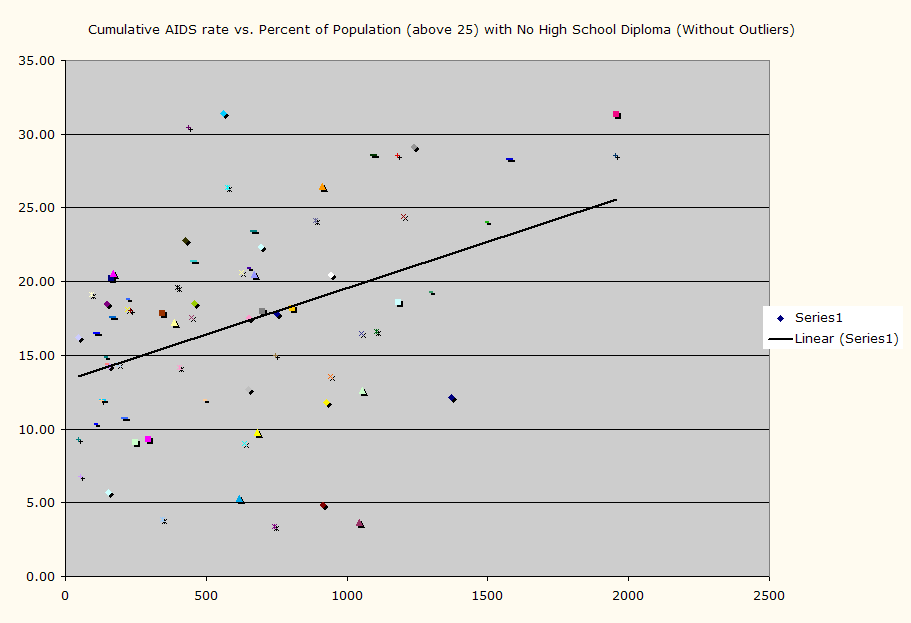INTRO: AIDS CORRELATION IN CHICAGO
EDUCATION
The most unexpected conclusion derived from the correlation between Chicago wards and Cumulative AIDS rates was the lacking interconnectedness between education levels and cumulative AIDS rates. If high cumulative AIDS rates are primarily associated with black, poverty stricken and unemployed populations, perhaps the residents in these areas are not receiving the same quality of education as those in the north. However, the percent of people who have never received a high school diploma has an insignificant correlation of 0.1589 with cumulative AIDS rates. According to this correlation coefficient, receiving a high school education has virtually no association with the incidence of AIDS infections.

This correlation coefficient between cumulative AIDS rates and the percent of a population (25 years and older) who did not receive a high school diploma adjusts from 0.1589 to 0.4098 when the three outliers, Uptown, Edgewater and Lakeview, are removed (Table 5/Table 6).

These three areas have the highest cumulative AIDS rates, but significantly low percents of people who dropped out of high school. Lakeview has the lowest percent of high school drop outs (3.2 percent), while Edgewater has 9.0 percent of high school dropouts and Uptown has 11.6 percent. These are significantly lower than Englewood (31.4 percent) and Washington Park (31.4 percent), the two South-sided wards with the highest percentages of high school dropouts (Table 3/Graph 6A/6B).
|
CORRELATION |
Poverty Level |
% Unemployment |
% No High School Diploma |
|
Black |
0.66834 |
0.79316 |
0.5716 |
|
White |
-0.7567 |
-0.80699 |
-0.7105 |
|
Hispanic |
-0.1904 |
-0.30423 |
0.0846 |